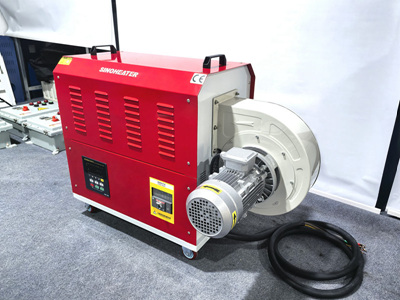Optimal Temperature Settings for Using a Hot Air Blower in Candle Wax Melting
Candle making relies heavily on precise temperature control during the wax melting phase. When using a hot air blower to soften or melt wax, understanding the thermal properties of different wax types and adjusting heat output accordingly is crucial for achieving professional-quality results.
Thermal Requirements for Common Wax Types
The melting points of candle waxes vary significantly based on their composition. Soy wax, a popular choice for container candles, typically melts between 46–52°C. Beeswax, known for its natural aroma and durability, requires higher temperatures around 62–65°C. Paraffin wax, commonly used in pillar candles, has a melting range of 48–68°C depending on its grade.
When melting wax with a hot air blower, start at the lower end of the recommended temperature range for your specific wax type. For example, when working with soy wax, set the blower to a medium-low heat setting (approximately 50–55°C) and maintain a 10–15 cm distance between the nozzle and the wax surface. This prevents localized overheating, which can cause discoloration or structural weakness in the finished candle.
Techniques for Even Wax Melting
Uniform heat distribution is essential to avoid hot spots that may lead to wax degradation. When melting solid wax blocks, use a sweeping motion with the hot air blower to gradually soften the material. For container candles, focus the heat on the sides of the jar rather than directly on the wax surface to prevent bubbling or cracking.
If melting wax in a double boiler setup, the hot air blower can assist in maintaining consistent temperatures. After initial melting on a heat source, use the blower to gently warm the wax to the ideal pouring temperature (typically 5–10°C above the wax’s melting point). This ensures smooth pouring and reduces air bubble formation.
Addressing Temperature Fluctuations
Environmental factors such as room temperature and humidity can affect wax behavior. In cooler environments, wax may solidify too quickly during pouring, leading to uneven surfaces. To counteract this, preheat candle molds or containers using the hot air blower at a low setting (40–45°C) for 1–2 minutes before adding melted wax.
Conversely, in warm conditions, wax may remain too fluid, increasing the risk of sinkholes or separation. Use the hot air blower to apply targeted heat to the edges of the candle as it cools, promoting even contraction and minimizing surface imperfections.
Safety Considerations and Best Practices
Operating a hot air blower near flammable materials requires strict safety protocols. Always work in a well-ventilated area and keep the blower at least 30 cm away from fabrics, curtains, or other combustible items. Wear heat-resistant gloves to protect your hands from accidental burns, and use a non-contact infrared thermometer to monitor wax temperatures accurately.
Avoid prolonged exposure of wax to direct heat, as this can cause thermal breakdown and release harmful fumes. If the wax begins to smoke or emit an acrid odor, immediately reduce the heat output and stir the wax gently to dissipate excess heat.
Post-Melting Temperature Adjustments
After melting, wax often requires cooling to the optimal pouring temperature before adding fragrance oils or dyes. Use the hot air blower sparingly during this phase to maintain temperature consistency. For example, if the wax cools below the recommended pouring range, briefly apply heat to raise the temperature by 2–3°C without exceeding the wax’s thermal limits.
When working with layered candles, the hot air blower can help bond layers by gently warming the interface between solidified and melted wax. Apply heat in short bursts (5–10 seconds) to avoid melting through the lower layer.
By mastering temperature control with a hot air blower, candle makers can achieve cleaner melts, smoother finishes, and more consistent results across various wax types and environmental conditions.




